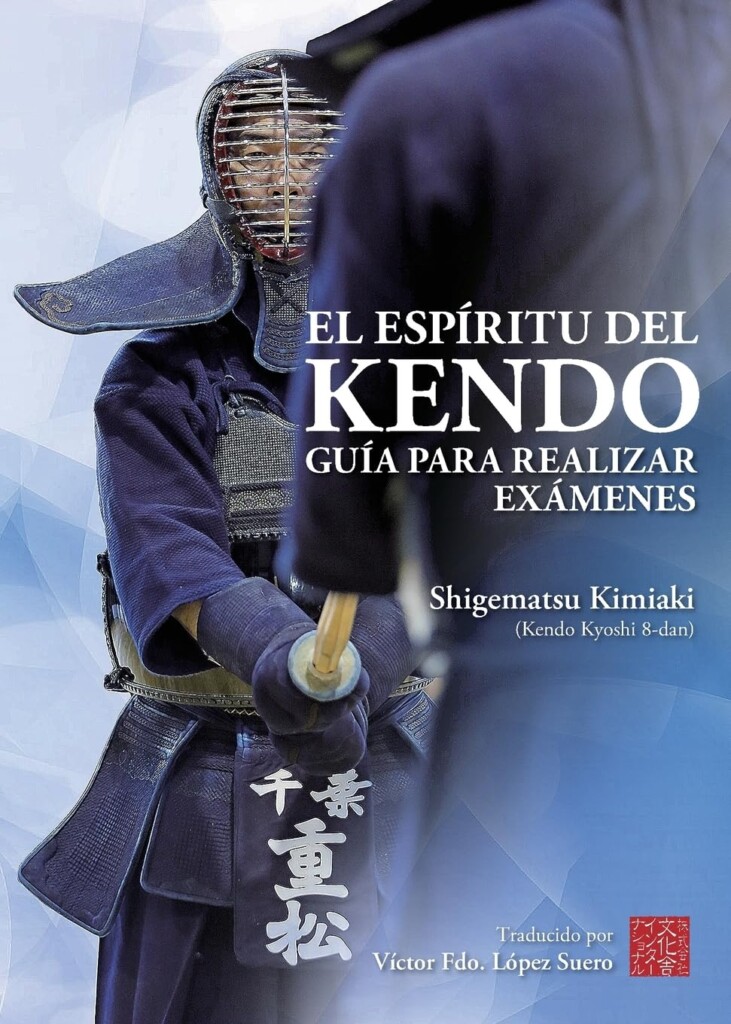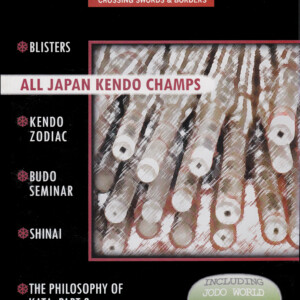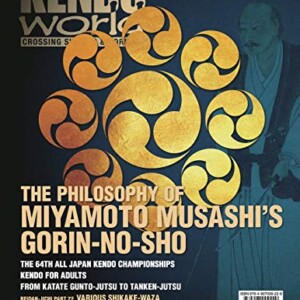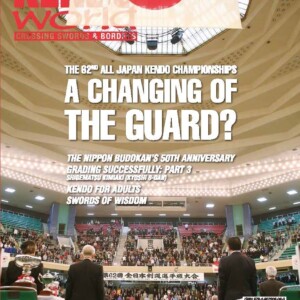
El Espíritu del Kendo

Shigematsu Kimiaki
Traducido por
Victor Fernando López Suero
*English below.
El excelente libro “El Espíritu del Kendo” de Shigematsu Kimiaki, kyoshi octavo dan de Kendo, que profundiza en cómo superar los exámenes con éxito, está ahora disponible en spañol. Magistralmente traducido por el kendoka mejicano Víctor F. López Suero, con el apoyo de varios kendoka mejicanos de alto nivel, ahora a su alcance en versión impresa y electrónica (e-book). La versión en papel está disponible online en Amazon y Barnes&Noble o también la versión e-book en la aplicación de Budo Books. Está última puede encontrarse en ITunes, Google Play y PC versions. Pueden verse los enlaces más abajo.
Sinopsis
Los practicantes de kendo consideran los exámenes de promoción y los encuentros competitivos como medios para fomentar la autodisciplina. La preparación para un examen de grado resulta particularmente motivadora en comparación con el entrenamiento habitual. No obstante, el fracaso en este empeño puede resultar sumamente desalentador. Existen individuos que superan cada promoción sin conocer la derrota, mientras que otros se enfrentan a un estancamiento. ¿Cuál es, entonces, la diferencia entre estos dos conjuntos de personas? Al desentrañar estas cuestiones, incluso mínimamente, usted se acercará un paso más al objetivo de aprobar.
El éxito en una evaluación requiere de múltiples factores, siendo uno de los más importantes el lograr impresionar a los jueces con golpes resonantes. Es imposible alcanzar su meta sin el conocimiento de cómo ejecutar esto con maestría. El contenido de este libro se fundamenta en las enseñanzas recibidas de mis sensei, en mis vivencias personales dentro del dojo y en las lecciones extraídas de libros y manuales de instrucción que he consultado a lo largo de mi carrera. Confío en que la información contenida en este pequeño tomo le sea de utilidad como material de consulta mientras avanza en la senda del kendo.
Nos complace que este libro esté disponible ahora en español y pueda ayudar a hispanohablantes de todo el mundo a tener éxito en sus próximos exámenes de grado.
***************************
Kendo Kyoshi 8-dan Shigematsu Kimiaki’s excellent book The Kendo Mind, which delves into how to achieve success in kendo gradings, is now available in Spanish and is titled El Espíritu del Kendo. Expertly translated by Mexican kendoka Victor Fernando López Suero, with support from several high-ranking Mexican sensei, this book is available in paperback and e-book versions. The paperback version is available from online stores such as Amazon and Barnes & Noble or in e-book version on the Budo Books app. The Budo Books app is available on iTunes, Google Play, and PC versions. Links to these can be found below!
Synopsis
Those who study kendo regard promotion examinations and matches as vehicles for cultivating self-discipline. Preparing to take a grading is especially motivating compared to regular training. It is, however, also a tremendous disappointment when you fail. There are those who manage to pass each examination without ever failing, and others who reach an impasse. So, what is the difference between these two groups? If you can figure this out, even just a little, you are one step closer to finding success. There are many things needed for success in an examination, not least of which is impressing the judges with resonating strikes. There is no way to achieve your goal without knowing how to accomplish this. The content of this book is based on lessons I learned from my sensei, my personal experiences in the dojo, and what I read in books and instruction manuals along the way. I hope that you will find the information in this small volume useful reference material as you tread down the path of kendo.
We’re very happy that this book is now available in Spanish and will be able to help Spanish speaking kendoka around the world be successful in their next grading!
AVAILABLE IN PRINT AND ON THE BUDO BOOKS APP IN E-BOOK FORMAT! SEE THE LINKS BELOW!!
Nota sobre Amazon México
Se nos ha informado que este libro suele aparecer como “no disponible” en la tienda de Amazon México. Al parecer, existen algunos problemas de suministro, aunque el libro no está agotado. Por ello, recomendamos seguir revisando la tienda de Amazon México. Como alternativa, puede adquirirse en la tienda de Amazon EE.UU. o en otros minoristas.
























No comments yet.